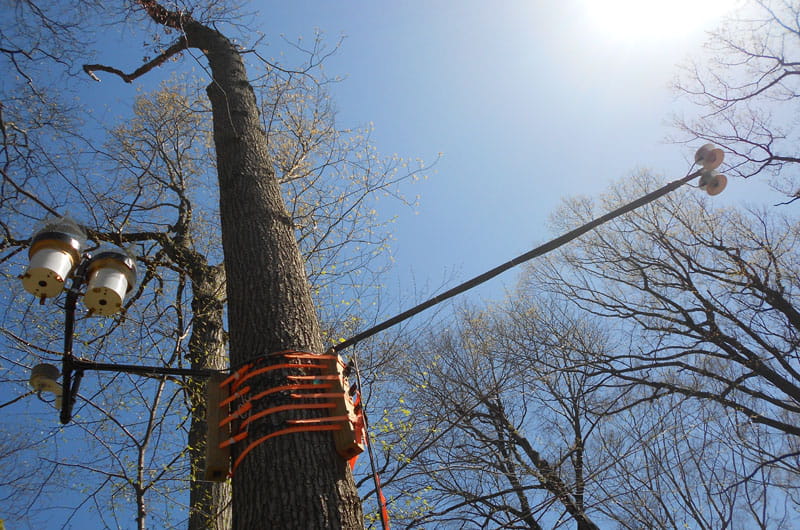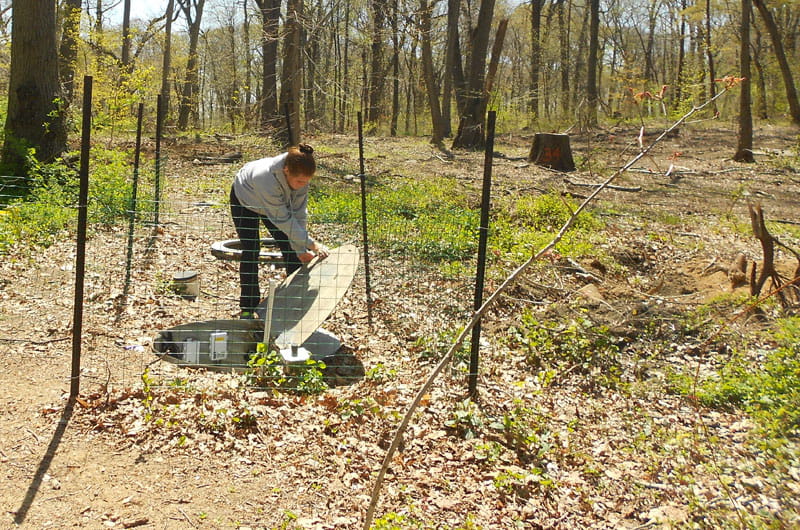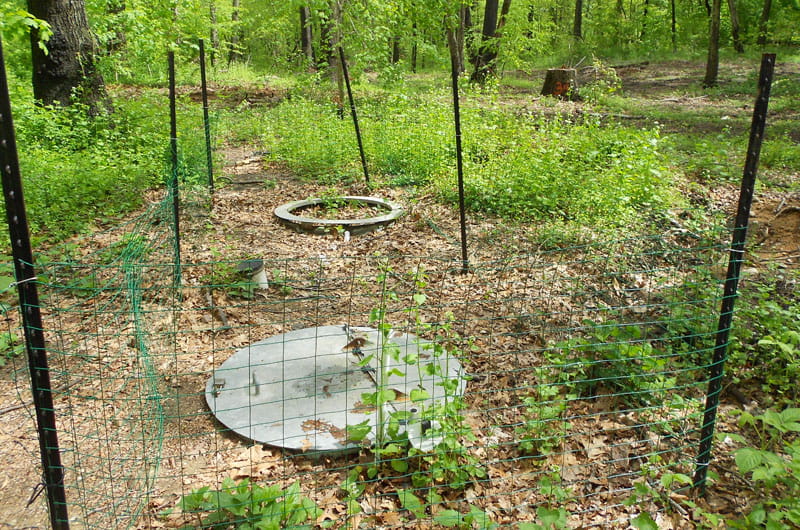Drexel Helps New York City Park Plug Into Research

A group of researchers from Drexel's College of Engineering are using their environmental monitoring technology to help New York City's last old growth forest join a network of wired ecosystems as part of a broad urban ecological research effort by the U.S. Forest Service.
From air and soil temperature to precipitation to solar radiation and phenology, data collected at Alley Pond Park in Queens, New York by a collaboration of scientists from Drexel University, U.S. Forest Service, NYC Parks and Recreation may contribute to making urban forests—and perhaps their rural/wildland cousins too—healthier and more resilient.

As it brings the Smart Forest Network online, the U.S. Forest Service is reshaping how scientists monitor ecological change over temporal and spatial gradients with the installation of environmental sensors and wireless communication on a growing number of experimental forests throughout the nation. The Smart Forest Network is also dramatically changing how information is shared; data that once was laborious to gather and sometimes took months to distribute is becoming available within hours of data collection. Alley Pond Park is one of the first urban forests in the network to be wired with Smart Forest technology.
Franco Montalto, PhD, an associate professor in the College of Engineering and director of the Sustainable Water Resource Engineering Lab, has been monitoring environmental data at Alley Pond since 2010. As part of National Science Foundation-funded research, Montalto’s group uses Alley Pond as an ecological reference site for green infrastructure sites in New York City and beyond.
“Our research seeks to develop siting, design and management strategies that maximize the services that new, engineered urban green spaces can provide to urban dwellers,” Montalto said. “Our goal was to determine how much evaporation, transpiration, canopy interception and microclimatic regulation was happening at Alley Pond, one of the City’s last old growth forests, so that we have a meter stick against which to gauge the success of our efforts to restore natural areas elsewhere,” Montalto said.

The addition of Alley Pond Park, the second largest park in Queens, to the Smart Forest Network represents a new collaboration for the Forest Service, NYC Parks and Recreation and Drexel, all of which have been partners on other research over the years. Drexel has been working with NYCDPR on green infrastructure research for several years, and the NYCDPR and the Forest Service established the New York City Urban Field Station in 2006. The Urban Field Station has become a cross roads for research on urban social and ecological systems, hosting individuals from throughout the region and world studying New York’s collection of historical and engineered green spaces.
“These partnerships help us bring Forest Service science and discovery to the city,” said Michael T. Rains, director of the Northern Research Station and the Forest Products Laboratory. “With our partners, we are gathering new information and developing tools that enable communities to better manage the 138 million acres of urban forests that grace and bring vibrancy to our cities and towns across America.”
The Smart Forest Network enables urban forests to serve as the proverbial canary in the coal mine for natural forests, as they experience more intense climatic, pollutant and land-use pressures than rural/wildland forests. Understanding the impacts of these ecological pressures may help land managers proactively manage exurban forests as increases in population and development bring some of those same pressures to their borders. In addition to their recreational and aesthetic qualities, urban forests (both relic and engineered) also help to buffer the impacts of flooding, and filter air and water pollutants.
“We have a wealth of information from wildland and rural forests,” said Lindsey Rustad, a research ecologist with the Forest Service’s Northern Research Station and member of the Smart Forest team. “With more than 80 percent of the nation’s population living in urban areas, we need to have a greater understanding of our urban forests. The Alley Pond Smart Forest is a prime example of a growing network of scientists who bring expertise from both rural/wildland and urban forests directly to cities.”
Research is critical to managing the nation’s largest urban forest in New York City, according to NYC Parks Chief of Forestry, Horticulture and Natural Resources Group Bram Gunther.
“Our work with the Forest Service, Drexel University and all of our scientific partnerships advance our understanding of urban ecosystems – both biophysical and social components – and our management of our city’s diverse natural areas,” said Gunther.
For media inquiries about the U.S. Forest Service’s Smart Forest Network, contact Jane Hodgins, jmhodgins@fs.fed.us. For media inquiries about NYC Parks and Recreation contact Tara Kiernan, Tara.Kiernan@parks.nyc.gov.
Drexel News is produced by
University Marketing and Communications.
